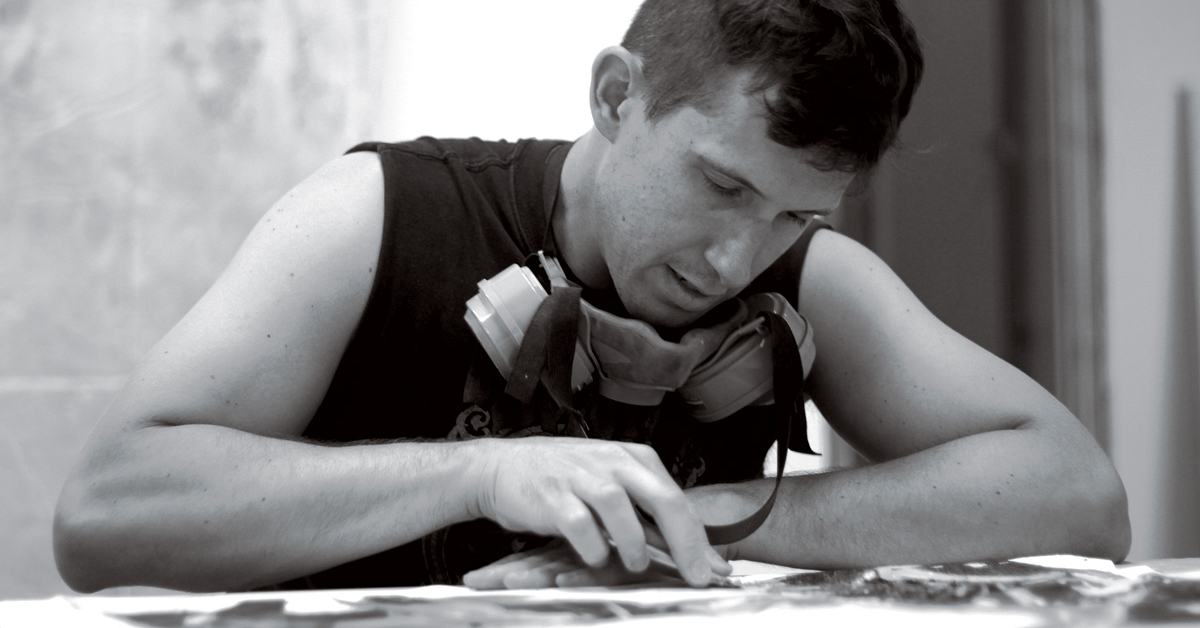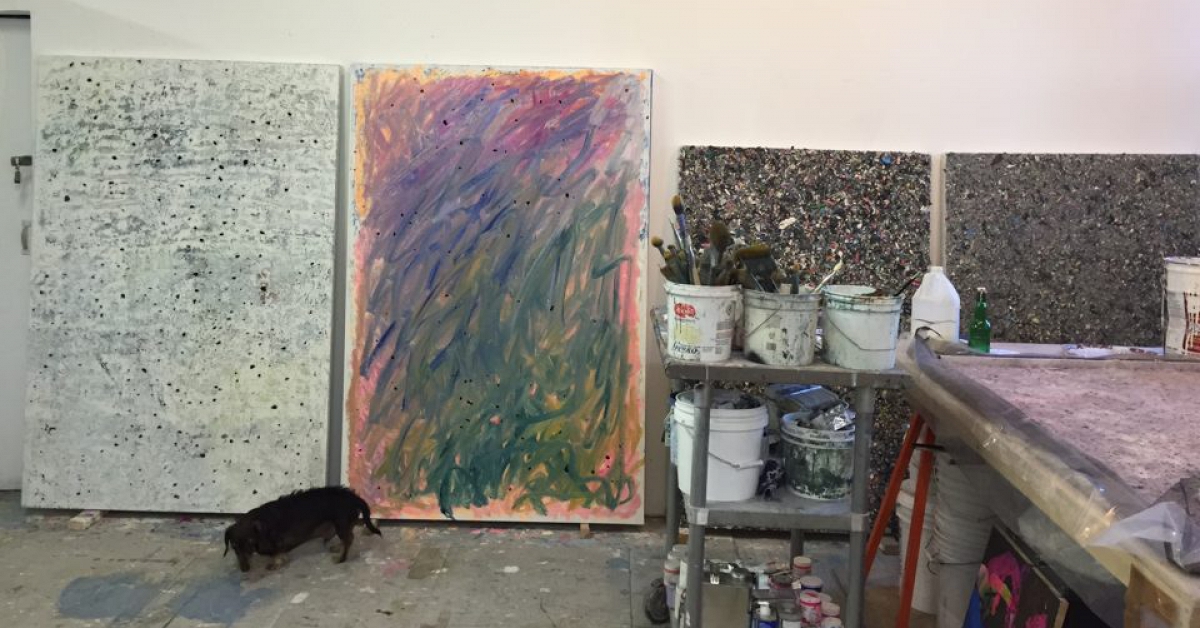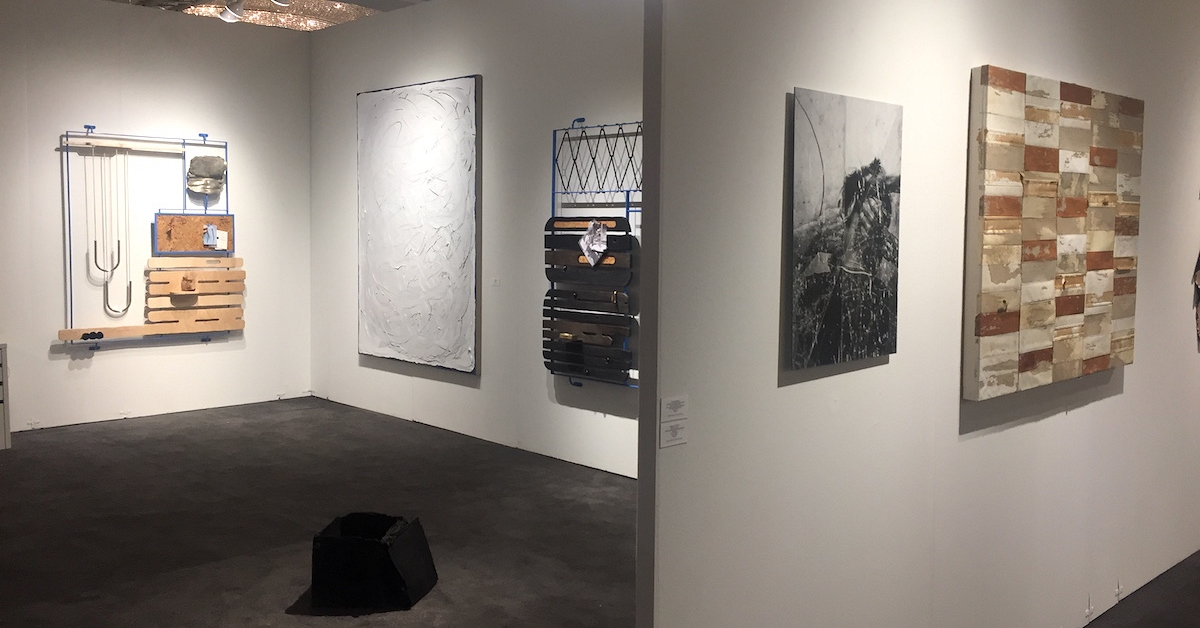At the Smart, ‘Solidary & Solitary’ shows individuals progressing Black art
Hyde Park Herald / Feb 25, 2019 / by Aaron Gettinger / Go to Original
An exhibition at the Smart Museum of Art shows how Black artists’ work has advanced visual art on the whole in their own terms since 1945.
“Solidary & Solitary” is drawn primarily from the collection of Pamela Joyner and Alfred Giuffrida, San Franciscans who have made it their mission to collect Black and African diasporic artists’ work in what Smart curator Jennifer Carty calls “a really mission-driven collection strategy.”
“They want to rewrite the art historical cannon,” Carty explained. “Which is why the show felt so perfect for the Smart, because that really acutely aligns with what we’re trying to do here with our exhibitions and public programs.”
“Solidary & Solitary” comes to the Smart after runs at the Ogden Museum of Southern Art in New Orleans and university museums at Duke and Notre Dame and before traveling to the Baltimore Museum of Art.
At the Smart, the exhibition is presented with one or two artists in conversation in each room. “It really speaks to how the Joyner–Giuffrida collection is really one of depth,” Carty Said. “They collect many [works] by the same artist and show a really wonderful swath of their work.”
She said “Solidary and Solitary” is predicated on the idea that African-American artists struggled between finding their own voices in abstraction and demands to do forthrightly political work, especially at the height of the Civil Rights Movement. “I think there’s something really interesting about the Joyner–Giuffrida collection,” she said. “It does really collect abstraction, but there is also figurative work.”
“I feel like it is kind of political to make abstract work, maybe at that time. It is kind of an act of having freedom,” Carty continued. “It’s much more about the individual artists themselves being able to create freely, but ramifications are felt when other artists can see everyone being uniquely themselves or pushing and pulling at art historical themes.” Even the exhibition’s name is a play on the idea of solidarity and visual art as a means of individual expression.
The artworks range from conceptual — Glenn Ligon’s neon “One Black Day,” Nov. 6, 2012, was lit only once, on the occasion of former President Barack Obama’s reelection — to paintings such as “Afternoon” by Norman Lewis, which Carty called “the genesis of the collection” and its painter the godfather of Black abstraction.
Samuel Levi Jones, one of the commissioned artists, works with themes of authoritative knowledge. Carty interprets Jones’ work for the exhibition, a series made from deconstructed law books, as a statement on the criminal justice system and, having destroyed the books to create the piece, their inscrutability.
Amanda Williams did three works for the Smart on the process of redlining; she laid a red carpet akin to a highway to the suburbs out the gallery with a caption by WBEZ South Side reporter Natalie Moore: “White families didn’t pitch tents in the open prairie. Their choice was eased by the federal government.” They also took a map of Chicago’s redlining from the 1930s, cut out the neighborhoods and scattered them on top of the city’s borders.
Bethany Collins made “My Destiny is in Your Hands”: wallpaper showing the faint outlines of state flowers from the South and terminal states of the Great Migration. “This idea of movement and migration as well as kind of thinking about race and nationalism and state pride,” Carty said. “It’s a very slow reveal. You walk in and think it’s just a white wall. But the closer you get, it’s actually … textural.”
“Solidary & Solitary” runs through May 19.
“Solidary & Solitary” is drawn primarily from the collection of Pamela Joyner and Alfred Giuffrida, San Franciscans who have made it their mission to collect Black and African diasporic artists’ work in what Smart curator Jennifer Carty calls “a really mission-driven collection strategy.”
“They want to rewrite the art historical cannon,” Carty explained. “Which is why the show felt so perfect for the Smart, because that really acutely aligns with what we’re trying to do here with our exhibitions and public programs.”
“Solidary & Solitary” comes to the Smart after runs at the Ogden Museum of Southern Art in New Orleans and university museums at Duke and Notre Dame and before traveling to the Baltimore Museum of Art.
At the Smart, the exhibition is presented with one or two artists in conversation in each room. “It really speaks to how the Joyner–Giuffrida collection is really one of depth,” Carty Said. “They collect many [works] by the same artist and show a really wonderful swath of their work.”
She said “Solidary and Solitary” is predicated on the idea that African-American artists struggled between finding their own voices in abstraction and demands to do forthrightly political work, especially at the height of the Civil Rights Movement. “I think there’s something really interesting about the Joyner–Giuffrida collection,” she said. “It does really collect abstraction, but there is also figurative work.”
“I feel like it is kind of political to make abstract work, maybe at that time. It is kind of an act of having freedom,” Carty continued. “It’s much more about the individual artists themselves being able to create freely, but ramifications are felt when other artists can see everyone being uniquely themselves or pushing and pulling at art historical themes.” Even the exhibition’s name is a play on the idea of solidarity and visual art as a means of individual expression.
The artworks range from conceptual — Glenn Ligon’s neon “One Black Day,” Nov. 6, 2012, was lit only once, on the occasion of former President Barack Obama’s reelection — to paintings such as “Afternoon” by Norman Lewis, which Carty called “the genesis of the collection” and its painter the godfather of Black abstraction.
Samuel Levi Jones, one of the commissioned artists, works with themes of authoritative knowledge. Carty interprets Jones’ work for the exhibition, a series made from deconstructed law books, as a statement on the criminal justice system and, having destroyed the books to create the piece, their inscrutability.
Amanda Williams did three works for the Smart on the process of redlining; she laid a red carpet akin to a highway to the suburbs out the gallery with a caption by WBEZ South Side reporter Natalie Moore: “White families didn’t pitch tents in the open prairie. Their choice was eased by the federal government.” They also took a map of Chicago’s redlining from the 1930s, cut out the neighborhoods and scattered them on top of the city’s borders.
Bethany Collins made “My Destiny is in Your Hands”: wallpaper showing the faint outlines of state flowers from the South and terminal states of the Great Migration. “This idea of movement and migration as well as kind of thinking about race and nationalism and state pride,” Carty said. “It’s a very slow reveal. You walk in and think it’s just a white wall. But the closer you get, it’s actually … textural.”
“Solidary & Solitary” runs through May 19.






